Search Images
Browse Content (p. 1120)
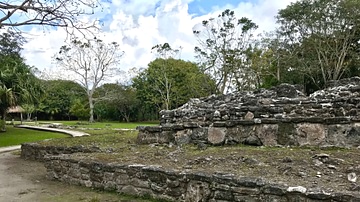
Image
Maya Tomb Structure at San Gervasio
This Maya building located on the island of Cozumel is named so due to the finding a vaulted tomb in its interior, unbique in San Gervasio, Mexico. The strcutre is a platform since it had no building on tiop of it — only benches — and an...
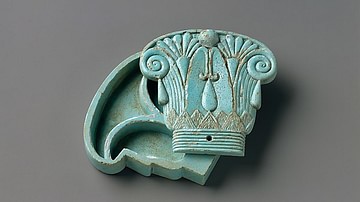
Image
Egyptian Faience Capital-shaped Cosmetic Box
This blue faience box is beautifully crafted in the shape of a Late Period column capital and has been dated to sometime between 664-300 BCE. It once held cosmetic ointments and such cosmetic boxes are well attested to in ancient Egypt. (Metropolitan...
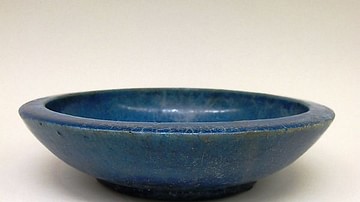
Image
Ptolemaic Blue Faience Bowl
This blue bowl is an excellent example of Egyptian faience ware, and why it was so highly regarded in the ancient Mediterranean. Ancient Egyptian artisans had been producing high-quality faience for millennia by the time this bowl was produced...
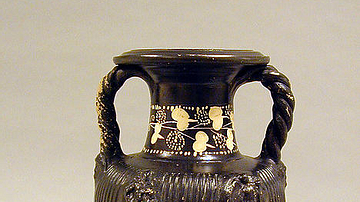
Image
Hadra Funerary Urn from Ptolemaic Egypt
This c. 275-250 BCE terracotta amphora was found in the Hadra cemetery in Alexandria, Egypt. It was originally produced in Crete and was exported to Alexandria. The aptly named Hadra Hydriai are a collection of primarily Cretan vases which...

Image
Demotic Temple Oath from the Ptolemaic Period
This piece of pottery with Demotic Egyptian text records an oath taken by Petasatet to declare his innocence in the case of cloth theft. This oath was taken before a priest of the Temple of Hathor on Dec. 6, 127 BCE. Temples played an important...
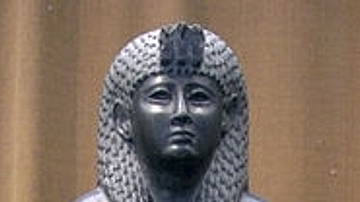
Image
Cleopatra as Isis-Aphrodite
This black basalt statue from Egypt portrays the Ptolemaic queen Cleopatra VII as Isis-Aphrodite (c. 51-30 BCE). Most Ptolemaic queens associated themselves with the goddess but none more famously than Cleopatra. In her own lifetime, she...

Image
Silver Tetradrachm Portraying Antony and Cleopatra
This silver tetradrachm portrays the Ptolemaic queen Cleopatra VII on one side, and the Roman triumvir Mark Antony on the other (1st century BCE). Cleopatra's profile has been made to resemble the features of her husband Mark Antony in the...
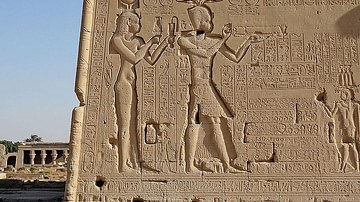
Image
Relief of Cleopatra VII and Caesarion at the Dendera Temple
This relief from one of the walls of the Dendera Temple in Egypt portrays Cleopatra VII along with her son Caesarion as Pharaoh. Cleopatra had intended for her son to succeed her as ruler of the Ptolemaic Kingdom, however her defeat at the...
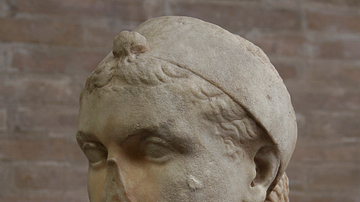
Image
Roman Portrait of Cleopatra
This marble copy of a portrait dates to between 40-30 BCE and is believed to depict the Ptolemaic queen Cleopatra VII. The bust is in fairly good condition although the nose has broken off. A broken off piece of marble on the statue's...

Image
Ptolemy XV
This larger than life 1st Century BCE granite head was found in the submerged sections of ancient Alexandria, Egypt. It is believed to have been a part of a statue depicting Ptolemy XV, commonly known as "Caesarion" (Greek for "Little Caesar"...